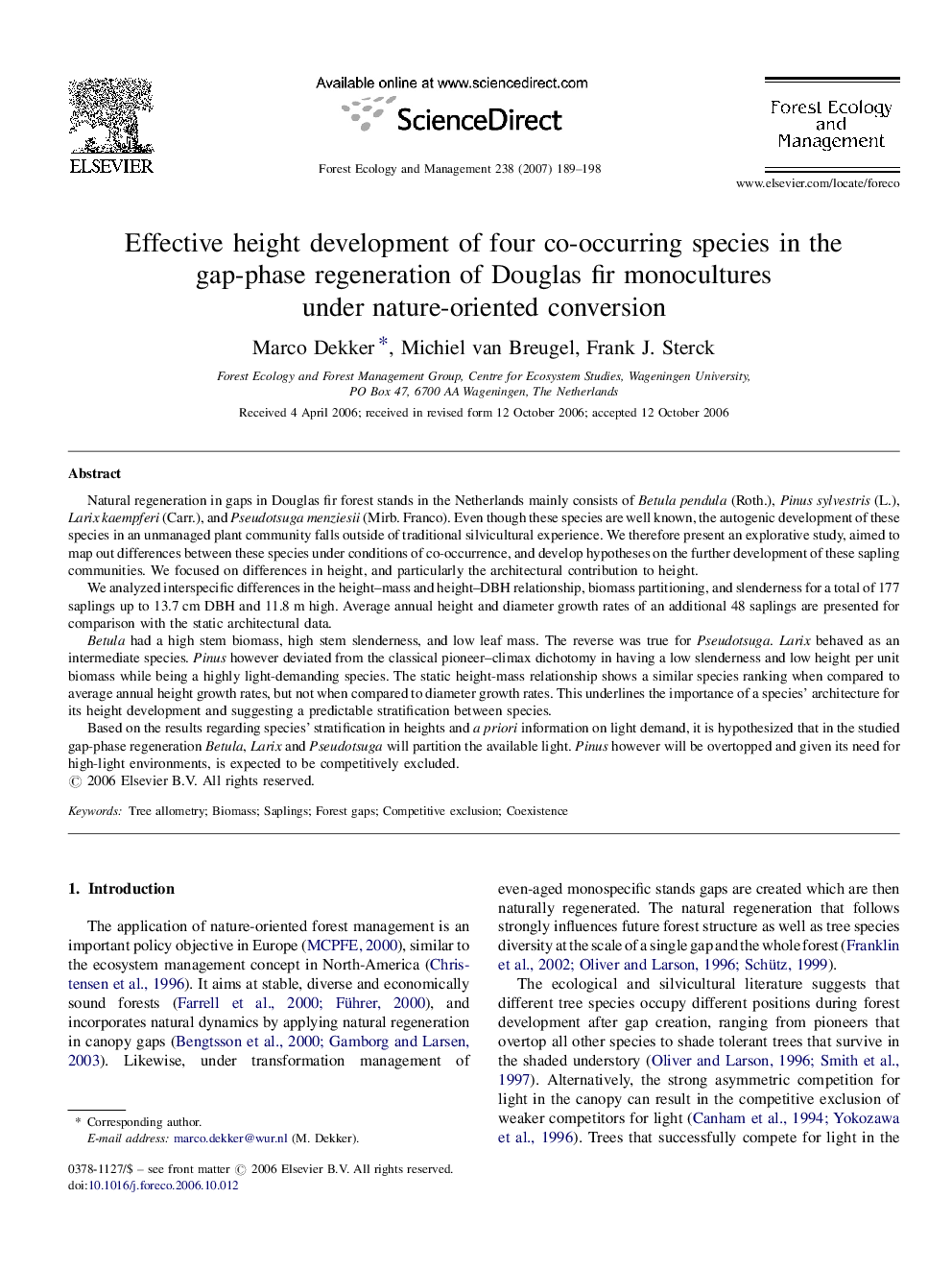| کد مقاله | کد نشریه | سال انتشار | مقاله انگلیسی | نسخه تمام متن |
|---|---|---|---|---|
| 90249 | 159374 | 2007 | 10 صفحه PDF | دانلود رایگان |

Natural regeneration in gaps in Douglas fir forest stands in the Netherlands mainly consists of Betula pendula (Roth.), Pinus sylvestris (L.), Larix kaempferi (Carr.), and Pseudotsuga menziesii (Mirb. Franco). Even though these species are well known, the autogenic development of these species in an unmanaged plant community falls outside of traditional silvicultural experience. We therefore present an explorative study, aimed to map out differences between these species under conditions of co-occurrence, and develop hypotheses on the further development of these sapling communities. We focused on differences in height, and particularly the architectural contribution to height.We analyzed interspecific differences in the height–mass and height–DBH relationship, biomass partitioning, and slenderness for a total of 177 saplings up to 13.7 cm DBH and 11.8 m high. Average annual height and diameter growth rates of an additional 48 saplings are presented for comparison with the static architectural data.Betula had a high stem biomass, high stem slenderness, and low leaf mass. The reverse was true for Pseudotsuga. Larix behaved as an intermediate species. Pinus however deviated from the classical pioneer–climax dichotomy in having a low slenderness and low height per unit biomass while being a highly light-demanding species. The static height-mass relationship shows a similar species ranking when compared to average annual height growth rates, but not when compared to diameter growth rates. This underlines the importance of a species’ architecture for its height development and suggesting a predictable stratification between species.Based on the results regarding species’ stratification in heights and a priori information on light demand, it is hypothesized that in the studied gap-phase regeneration Betula, Larix and Pseudotsuga will partition the available light. Pinus however will be overtopped and given its need for high-light environments, is expected to be competitively excluded.
Journal: Forest Ecology and Management - Volume 238, Issues 1–3, 30 January 2007, Pages 189–198